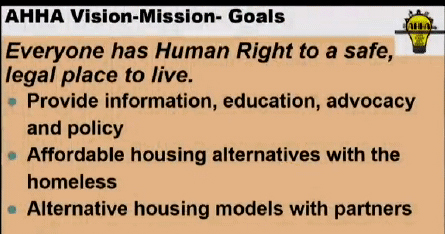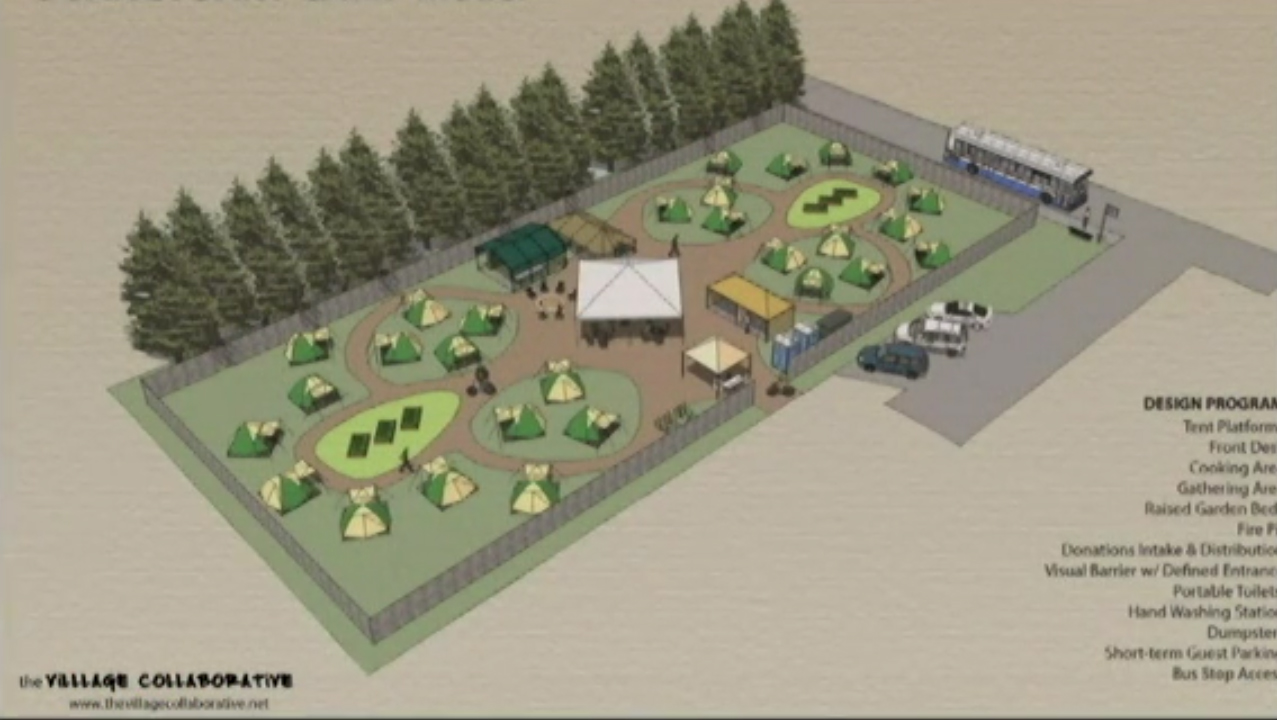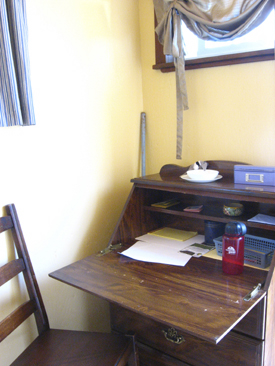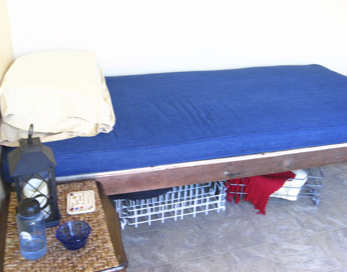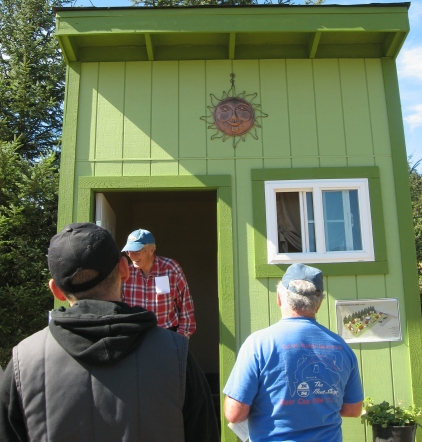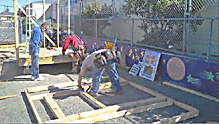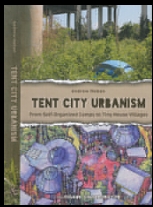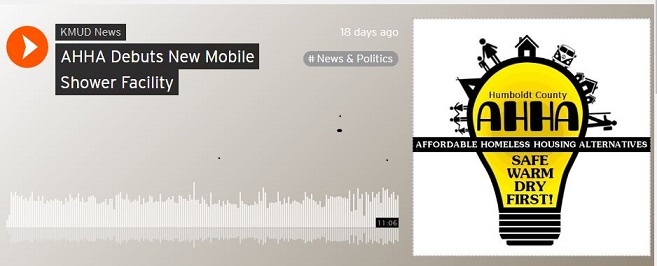"We have not seen the kind of action that the enormity of the situation demands.... Our churches are bombed and burned, people are shot, the vote denied."
Martin Luther King, Jr. ****
With courage, integrity, and hard work, AHHA has created a vision and a path to help move us toward the "beloved community" described by King.
...Dr. King’s Beloved Community is a global vision, in which all people can share in the wealth of the earth. In the Beloved Community, poverty, hunger and homelessness will not be tolerated because international standards of human decency will not allow it. https://thekingcenter.org/king-philosophy
31 of our vulnerable neighbors died
outside from June 1, 2018 - August 31, 2019. (Will provide update when becomes available.)
Humboldt County Coroner's Report
The Point-in-Time Count for the "homeless" which is taken on one day is always an undercount. This year (2019) it was 1473 for Humboldt County (compared to 668 in 2017). https://www.times-standard.com
In the following presentation AHHA invites the City of Arcata to partner with them. The invitation extends to all of us.
It's timely because momentum is building to create the life-saving, caring, healing, affordable solutions AHHA has been advancing to fill the shelter gaps.***
As one example, the updated 2019 Humboldt County Housing Element prioritizes "Tiny House Villages" as an affordable housing solution.
______________________________
This insightful North Coast Journal article by Freddy Brewster conveys the historical importance of adopting bold and innovative and affordable solutions (which this site demonstates have been advocated by AHHA such as but not limited to Tiny Home Villages) by not only incorporating them in a housing element but also through a commitment by staff to work with the community to move forward to make them a reality to address our housing crisis.
https://www.northcoastjournal.com/humboldt/with-housing-element-passed-staff-pushes-forward-on-tiny-houses/Content?oid=15067610
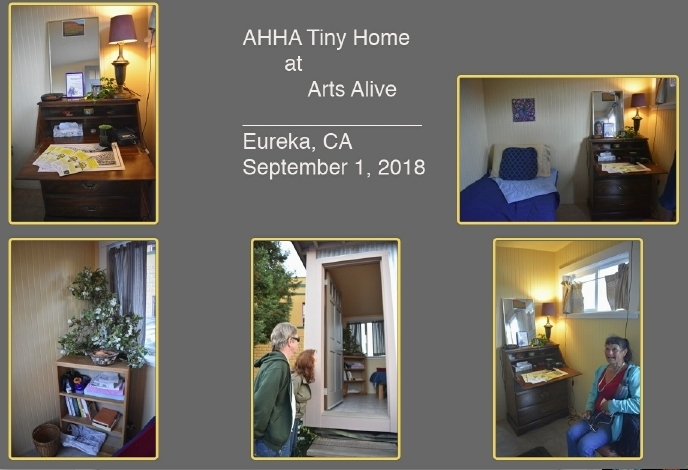
Arcata City Council 12-6-17
AHHA Presentation
by Board Members
Affordable Homeless
Housing Alternatives
Link for video of AHHA presentation https://www.youtube.com/watch?v=xdjZHecIAbs&feature=youtu.be
Below is transcript with Illustrations.
Illustrations not available for Part II (due to technical difficulties ).
But presentation can be viewed on video. So, why take time to read transcript? It provides an opportunity to more deeply understand AHHA'S approach (empowered by a moral vision as a blueprint for very practical affordable shelter solutions (they reveal with nuts-and-bolts details) and which they advance with grit and other qualities that history reveals are essential.)
|
NOTE: AHHA members and
allies have made passionate speeches when needed to raise awareness
of the harsh conditions of people living outside.
So, don't be fooled by the calm and low-key tone of this presentation on Tiny Home Villages. It provides an opportunity to better grasp AHHA's solid and ongoing groundwork which has proven to be essential for transformations they promote to create supportive affordable solutions. And while it may be disappointing that Arcata has not yet adopted Tiny Home Villages as an option, AHHA consistently persists in the face of indifference or opposition. And they succeed in achieving results that seem impossible. After years of resistance, Eureka and Humboldt County each passed Shelter Crisis Resolutions. AHHA refuses to accept the inhumane living conditions, suffering, and deaths of our vulnerable neighbors (which at times puts them at odds with those who accept the current homeless crisis as the status quo which even if unfortunate is tolerable). AHHA never wavers in their dedication to advocate for those in need of shelter and services to meet basic human needs.
| |||||
|
PART
I Nezzie Wade: President of the board of AHHA AHHA is here tonight to invite you to enter into a partnership to create a pilot Tiny House Village. in Arcata. 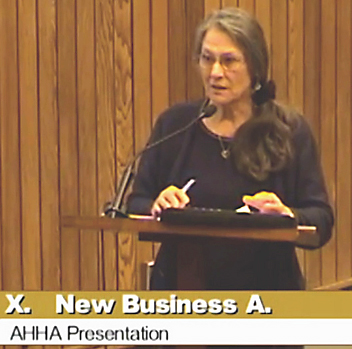
Note: Invitation extends to all communities seeking affordable, practical, supportive solutions to provide shelter. The village is Tiny House Villages offer a new paradigm for what would be considered Bridge Housing or Emergency Bridge or Interim Housing that is much more economically accessible and also ecologically sustainable. 8-Minute PBS Video on Opportunity Village (Can be Viewed at Link
at Bottom of Page) In late 2014 we brought Andrew here from Oregon and held a community forum in Eureka at the Women's Club and had 250 participants who were very excited about the idea of Tiny House Villages. And the sentiment overarching was that something like this should be available throughout Humboldt County. 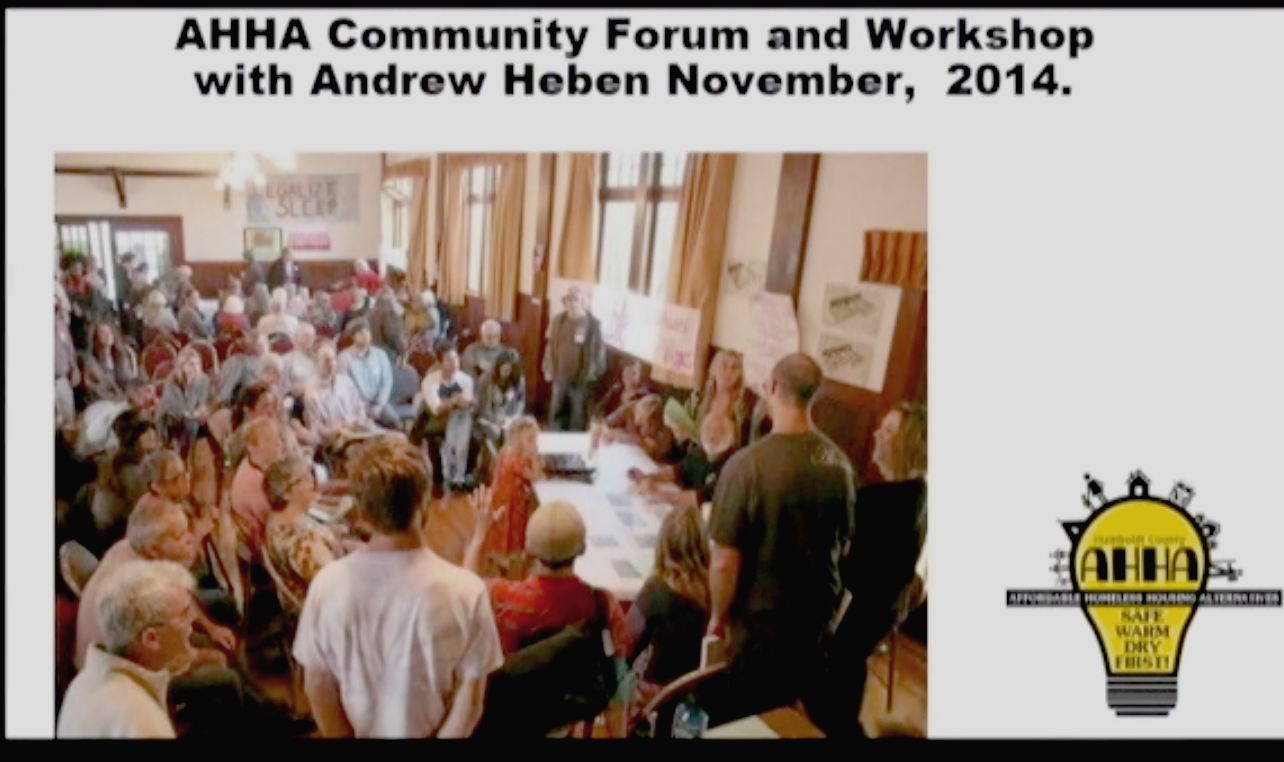 So our focus has always been on a countywide kind of approach because it's something that's needed in every community to accommodate our lack of affordable housing particularly for people that have few resources...are homeless.
Our vision is that everyone has a human right to a safe legal place to live. AHHA's mission is to provide information, education, advocacy and policy development for affordable housing alternatives with* the homeless in Humboldt County. And to facilitate the implementation of these alternative housing models by networking with private groups, nonprofits, public agencies, faith-based organizations, individual volunteers, and by partnering with the cities, county and others to ensure development and capacity building. *("With" was strongly emphasized.) We have been working for several years since we began organizing prior to becoming a nonprofit, finding out who the stakeholders are and working with them across the board. We have held open community conversations for the past two years at St.Vincent de Paul in Eureka with those who have been experiencing homelessness and the larger community to discuss affordable camps-to-village alternatives, safe parking. And as an integral part of community, what that might look like and what people would want. In our conversations we discussed simple community agreements. You have a packet that is for this presentation tonight. And then there are some sample operations procedures and also the community agreements. We have gone over basic operating rules. types of dwellings from tents to tiny house designs that are potentially on or off the grid. And we've had engineers meet with some of the folks that are living outside. And Michael can talk a little bit more about that later. Those that are living homeless are witness to the effectiveness of village life. And their wisdom is included in our proposals and our projects because they have taught us the best practices about living in a community. They know what that's like. They've been living outside rough and in encampments for a long time. In 2015 September AHHA held a Tiny House Expo. Over 700 people participated. And they came to see the demonstration on how a sanctuary camp can morph into a tiny house village. We have lots of other options for how people can accommodate themselves when they are homeless in affordable ways. But here we had also the CCC set up a field kitchen to demonstrate how easy it is to have safe and easy sanitation and food services as well as storage for a large number of people. Click
HERE to view North Coast Journal article with
photos. https://www.northcoastjournal.com/NewsBlog/archives/2015/09/27/big-turnout-for-tiny-homes Big Turnout for
Tiny-Homes
On some formats (pdf) you may have to paste web
addresses into your browser
This is a graphic from the Village Collaborative or the sanctuary camp for Andrew Heben's graphics. You can see that this is what we would consider our phase one of the village because people need to live in place. So there are tents and clusters as tiny houses would be in clusters with a central facility and food preparation area. There's porta-potties and dumpsters at the entrance. Also a gate check-in and check-out, There's also sanitation hand-washing stations. This is near a bus stop which is one of the amenities for a site. 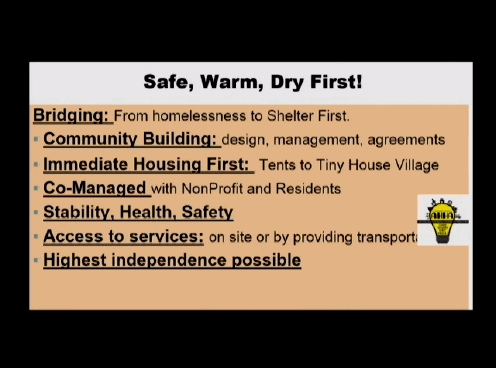 AHHA's meme is "safe warm and dry first." It's kind of the Housing First concept. Our project model facilitates those experiencing homelessness (particularly chronic homelessness) getting into immediate affordable safe camping and village programs. The emphasis is on building community and getting potential residents into safe healthy conditions where they can begin to stabilize and thrive and recover from the trauma of being homeless...as well as other trauma...and be supported in the highest level of independence possible. The village would be co-managed between the oversight with the nonprofit and the residents who would be exercising independence in their decision-making. There would be a council that would be the village council that would meet once a week. And residents would be required to participate. As the tiny houses are developed they will allow each resident the privacy and autonomy that we all need for gathering ourselves together...and a safe place also to keep their belongings. But the security of having a door and being able to lock it is something that actually allows for people to rest for the duration. In addition no one would be on site without their being knowledge of that. Everyone has to be approved and it's important that we maintain the security for the sake of the residents. And it's like any other gated community. The communal setting and positive social support from peers, and the shared responsibilities for the environment, the community, and the use of common facilities brings people into community life in a way that encourages integration and brings interdependence and a sense of mutuality and trust. They're responsible. It's their home. It's their environment. The goal for AHHA for the village would be to facilitate access to opportunities for as many as possible for all residents whether it's healthcare (medical, physical, or mental), social services, skill development, education, training, entrepreneurship, micro businesses, job placement, or just being part of a healthy, thriving supportive community. Countywide, I mentioned was our vision. The village model by design, by its very nature, is a recovery kind of environment that will prevent and mitigate the negative consequences or outcomes of experiencing homelessness for those that have been chronically homeless. The village, as I said, would be co-managed. And you have an example of the community agreements. We have a basic set of rules that we have actually vetted or have been informed about from those people who have lived in communities that have been homeless. So AHHA would be the contractor with the city and for the other services. While residents would be self-regulating and required to participate in the meetings where any issues that arise would be processed for resolution because self-governance is a core value of the community. To build a community, we would be working with local contractors and community members. The village responsibilities would be those of the community members. And there are many tasks from maintaining the entrance and visitors, The human scale of this development is really what's the most important thing here because it can be carried out within a local level, our local community level. And it's kind of a grassroots model for developing low-cost housing without the dependence on government subsidy. So nobody's asking you for a lot of money. We're asking you for your support in having a space and working with us to accomplish some of what would be required to get that site prepared and so on. AHHA encourages everyone to read Andrew Heben's book if you haven't. It's really very good. And he's a great author. The Tiny House Village provides a path for people to get out of homelessness. And it's intended really as alternatives. He writes of the tiny house village not only for the original residents who are people trying to get on a pathway out of homelessness into community. But it's also for seeking alternatives to conventional housing options because the alternatives can reduce human impact and can increase s focus on building community rather than other options. See end of web page for how to order Andrew Heben's book.
By 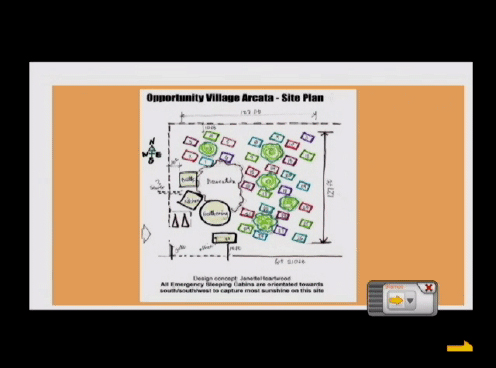 [Note: Can be adapted to other sites/communities] But this is kind of a view of what the community would look like once established. This is a graphic again of what a transitional community would be. So the tents have been replaced by tiny houses in a central facility. That's a yurt. And the gardens remain. This is a site map of what would be the parcel in Alder Grove. The street on this side would be Erickson Way where the arrow comes in. There's one driveway. There's a road adjacent or a drive adjacent to this parcel. This is the gathering place. The kitchen. [Baths.] The recreation area. These would be rest rooms. A gate and office. All the clusters of little houses would be the same. This is a little bit... just a demonstration of all emergency sleeping cabins that are oriented it says there towards south-southwest to capture most of the sunshine on the site. Now we have visited this site. And we've been studying it over the winter and we are very aware. And there will be an overhead in a minute. But through these wet weather days we realize that this site is subject to flooding and the roadway is much higher than the ground. So that there's a lot of water there that would need to be mitigated prior to being utilized as a project site. Susan Ornelas (Mayor of Arcata City Council): Is that one acre? Nezzie: About that. Nezzie: There's a garden scene here too somewhere. Yeah and all kinds of projects could be possible. 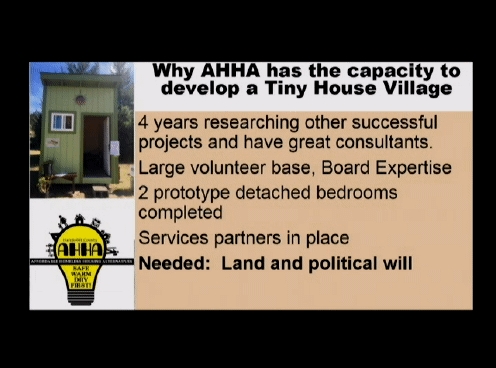
So, why does AHHA have the capacity to develop a tiny house village? We've been studying it for a long time. And we have lots of great consultants and people across the country who are eager to help us proceed and lots of local support in terms of volunteers and our board expertise. We've also got connections with suppliers and with businesses who would really like to see this proliferate throughout the county. But Arcata is a perfect place because of the ethics and the values that are core to Arcata being successful in other very innovative projects. We figure this is a really good opportunity. Our board expertise. We have lots of very talented individuals. A few of whom have varied expertise in lived experience of homelessness in encampments and on the street...extreme poverty. Commercial property management as well as shelter operations, legal services, program development. Including employment programs., engineering and contracting housing development, and implementation and street outreach, And each member has an extensive network of resources and support. We also have experience in building houses. And we have a lot of service partners that are in place. Arcata House management is willing to do case management for the village. And we also have connections because of being a member of the Housing and Homeless Coalition for a number of years now. And also we have DHHS and other services that we would rely on. So each resident would have a transition plan or a service plan. And again we would like to call on Arcata, on the council, the city to be a pioneer and our partner in creating a pilot project based on your environmentally innovative values. And we'll come back to that. What we need is land and the political will to do that. | ||||||||||
| Mike
Avcollie: Member of the Board of AHHA 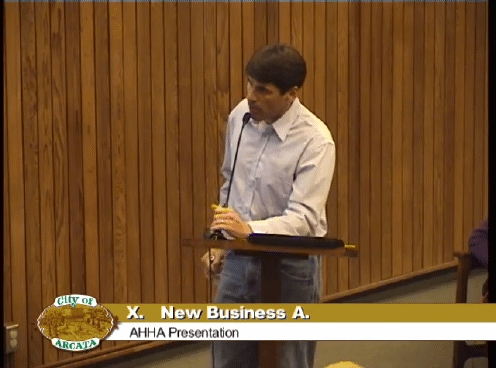
I would like to just thank citizens of Arcata, City Council, and staff for being here and letting us present tonight. I'm just going to jump back to this slide about what is labeled a detached bedroom or a tiny home. So, as Nezzie mentioned we have already built a couple of prototype homes in our preparation for taking on a project like this. AHHA has been in consultation with HSU students and engineering classes up there to work on heating and lighting systems. I'm one of those students and that's how I got involved in this project. We've also partnered with Engineers Without Borders to develop waste water treatment strategies for this project. One of the things we knew when we were working on this as a student group is that we had to maintain low-cost options for the project. This is a rough example of some of the costs. We were able to try to stay under $5,000 for the material costs for one tiny home. Now part of that is is a simple shell constructed mostly of two-by-fours and plywood. We put a lot of technology into our thermal solutions to try to keep these buildings warm. We also came up with some electrical solutions both off-grid and grid connected for the buildings. Again, a rough budget for one house...we tried to come under $5000. And you can just see it extrapolated out for the potential of six or twelve houses. 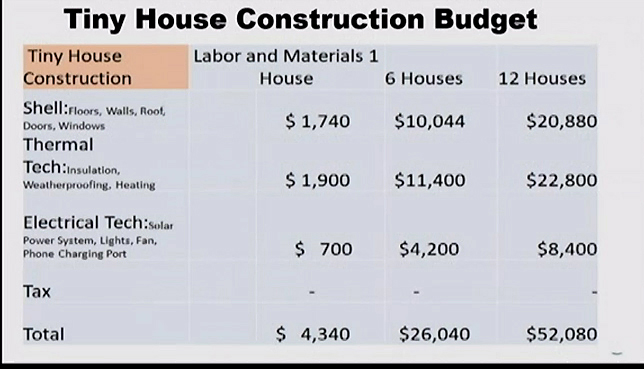
So design concerns...I'm just going to go back to what we were thinking of when we worked on these plans. It was to keep the residents of the houses warm, safe, and dry...which was a big challenge. We got a chance to interview a lot of people who are living on the streets in Eureka and Arcata. And one of the things we learned is that these folks reported that they were never dry. It just was unachievable living on the streets. When we thought about that, we realized that in these tiny homes, moisture buildup could be a really big problem. So while we might be able to get them out of the weather and keep bulk moisture off of them, humans are a big source of moisture within a building. And so we are very concerned about that. Quality of the habitation was really important to us. Those were some of our major concerns. 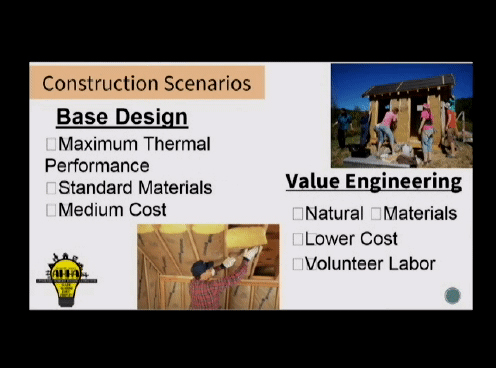
A base design we thought we should have always try to achieve maximal thermal performance, use standard materials that could be found easily, that would maintain our cost. We also added a layer of value engineering where we thought about alternative materials, natural building, volunteer labor, and other things that could really help us control costs. Those were again some more of the concerns of some of the design teams.  This is a scale drawing of one of the tiny homes that was built. It was built out at the Blue Ox facility in Eureka. You can see that this is just a little bit bigger. The footprint of it is just a little bit bigger than a sheet of plywood (eight feet by 10 feet and under nine feet tall). 
Some of the details you'll see. It was 2x4 framing in the roof in the walls and in the flooring. But we did think about adding layers of insulation. California Building Code will require R15 for wall insulation. We did our best to try to provide that level of thermal protection. We thought a lot about keeping bulk moisture out of the buildings while still letting the internal moisture of the residents wick or breathe out and to be able to communicate out. So some of the details you'll see here are layering...different vapor barriers and insulation layers. And again the engineering students were trying to use the best building sciences available to do the most we could with very little resources. So that was a wall section. 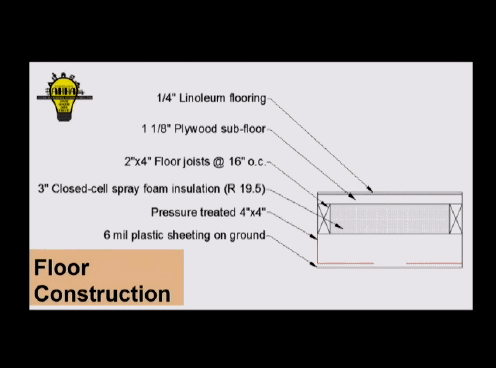
This is a floor section. Again a very minimal construction. But you see we thought about six mil plastic on the ground to keep vapor from mitigating up into the buildings. They would be built on pressure-treated skids as a foundation. That's not the best. But it allows them to be picked up on a forklift and moved and put in place for a village that may be a temporary facility. A lot of the thought behind these houses are that they are not always going to be the most permanent source of housing. Our site might not always be a permanent home for these tiny homes. So they need to be mobile. Again. Spray foam insulation on the floor acts as a vapor barrier and helps to keep the house warm. More than keeping them warm, safe, and dry, we had electrical needs. We knew that these residents need to be charged, lit, and connected. And again the connected came out of interviews with people who were living on the streets. Their need to stay connected for job interviews...for maintaining their relationships with other people in their community...was largely based on their phone. Like everyone else, of course, that's not surprising. But their ability to charge the phone is greatly limited compared to yours and mine. So that's part of keeping them connected. And there are two ways you could do this. 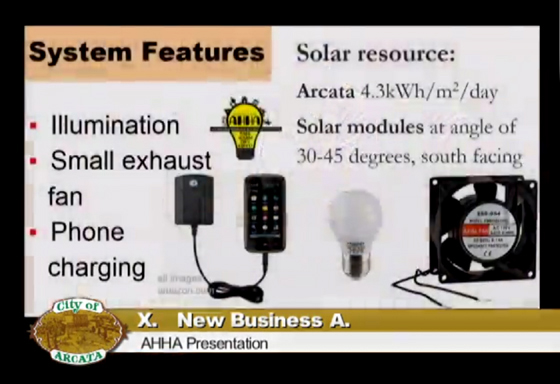
With a small not even a micro solar. This is what we would call a Pico solar system. So the students that worked on this designed around Arcata's solar resource. They tried to pick an ideal tilt for solar modules that would be installed. And they had a basic set of loads that they designed around. Basically keeping a one LED light on and exhaust fan to keep moisture from building up inside the house to maintain air quality and also phone charging capabilities. And that is a relatively high priced option. And I think our original budget was around $700 and we realized that may not be available or feasible. And another way that you can get electrical needs met is if there was an electrical connection at a central facility. 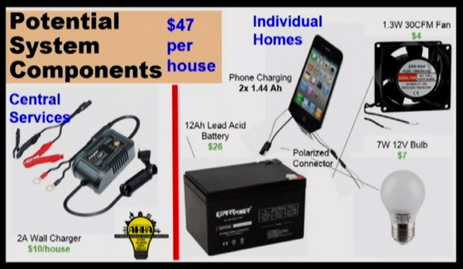
If there was an electrical connection at a central facility theoretically at a much cheaper option...residents could have a 12-volt battery that could be charged at the central facility and then brought back to provide electrical services at the tiny house. So that was another option and a lower cost option than providing a small solar array. | ||||||||||
| CLICK
HERE FOR PART II http://www.sonic.net/%7Estepnext/AHHA_COMMUNITY/PART_2.html ---------------------------------------------------------------------------------------------------------- On some formats (pdf) you may have to paste web addresses into your browser Arcata City Council 12-6-17 AHHA Presentation by AHHA Board Members
| ||||||||||
